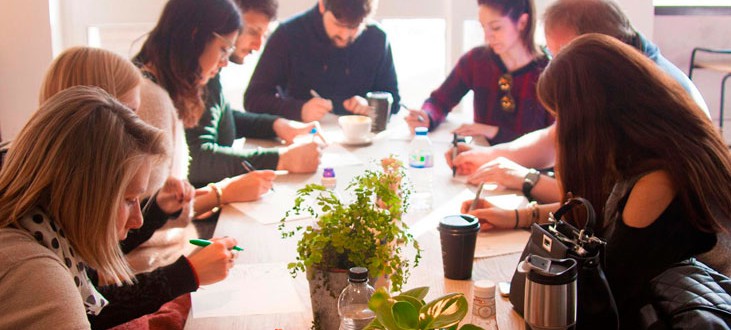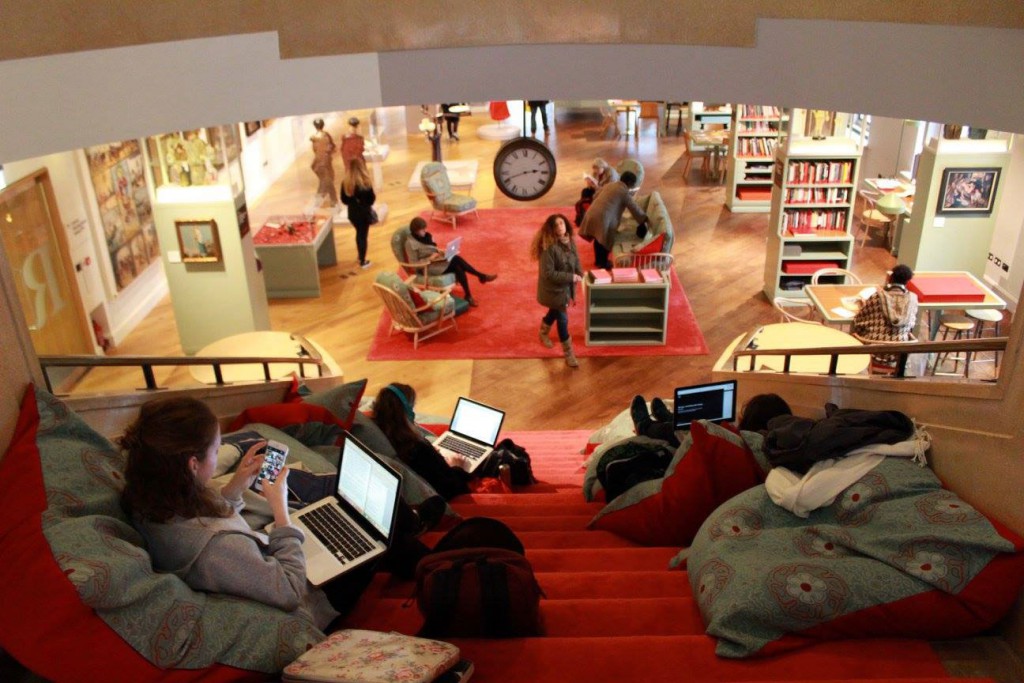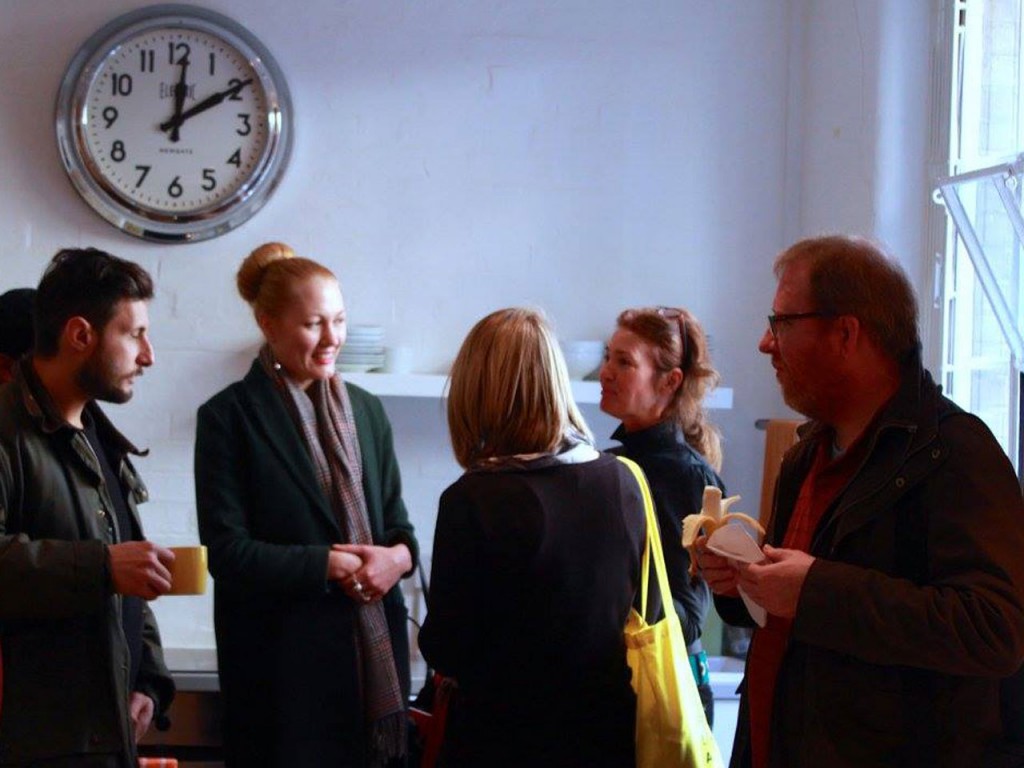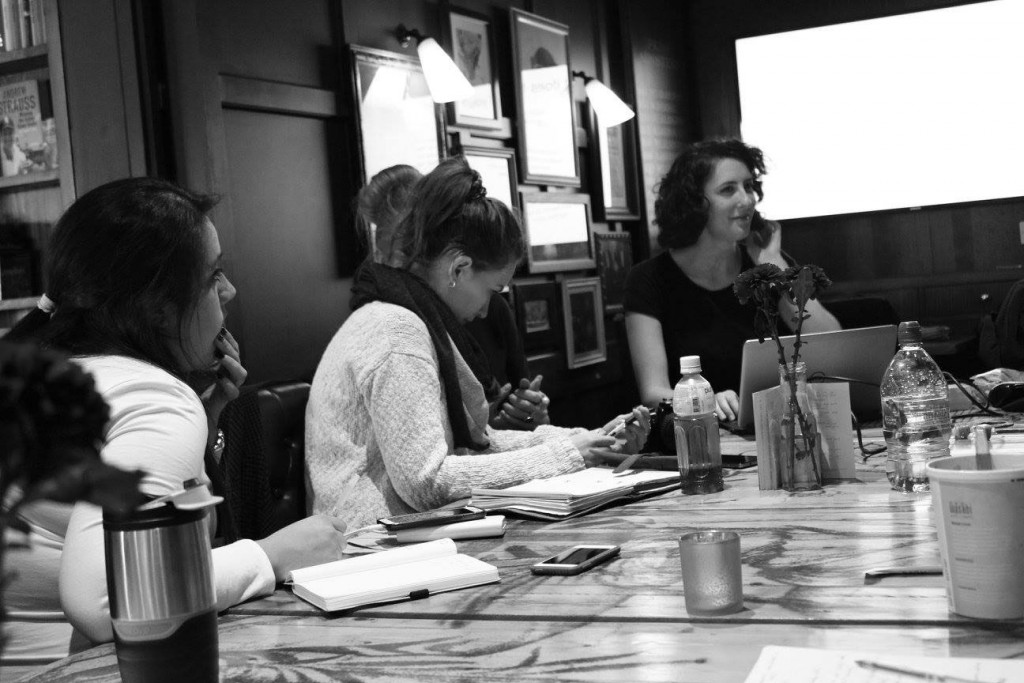Design thinking and innovation week at Future London Academy II
On Wednesday, we met Jody Shilliday, Head of Social Media at Fetch. It was such a nice conversation where we debated on how to reach our target client without losing our company’s identity; ” You have to group your audiences and tailor your message to them as much as you can but always maintaining your philosophy”.
We also discussed the importance of getting as much information from every platform and using it “without being creepy”, and what is the information you can expect from each of the different social networks. For instance, Pinterest is about intent: people who are planning to do something.
Charged with tons of good energy we visited Tobias & Tobias offices where we had the pleasure of meeting Alberta Soranzo and speak about Innovation and Design.
“A closure experience is the satisfactory conclusion to a product or a service relationship”, with this Joe Macleod’s phrase, we started to think about user experience and we talk about the “pain graphic” where we can map the good and bad experiences of a customer while using our products. Doesn’t matter if your product or service is very good if there are picks on the graphic, those picks are the bad experiences while using your service and that is what your client is going to remember! So, what does it mean to you being a designer? We do agree with Alberta’s opinion on that “being a designer is being respectful to the people we design for”
Following a couple of very fun and creative service design exercises, we spoke about the creation and testing processes and how we have to stimulate our clients to actually achieve what they really need. “You cannot want what you don’t know you want”, she said to visualize the idea.
In the afternoon and after creative a lunch break at Barbican Centre, we visited Flux and we talked with Richard Poole about Innovation and where ideas come from using various Design Myths:
- My ideas have to be good. All ideas are bad until someone makes them good, ideas are not valuable unless you make them real. Have a lot of them to increase your possibilities.
- There is a creative genius behind every great idea. There isn’t such a thing as great idea, all ideas are a group of many other smaller ideas put together. So smash and grab, build on others’ ideas, twist and existing idea or asset into yours. Notice things other do not.
- Protect your ideas. Don’t confuse the idea with the solution and give your ideas away freely and let other people make the better. You will get end up better off. Like Tesla Motors.
We finished analyzing how to test and present our projects. Richard gave us great advice: we should try to make our experiments and tests as much real as possible in order get reliable information and we should always try to use the voice of our customers to convince our clients.
We reached Thursday tired after three amazing days sharing knowledge with many of the top design companies in London, but with many ideas and questions to inspire ourselves.
In the morning meeting, we keep talking about sharing, in this case working space. We talked to Francesca from The Trampery coworking space who explained to us that coworking is much more than sharing an office. It has to be a space where things happen, where events are organized, where ideas are shared and put together to make better and bigger projects. As she mentioned: “Members are as family”.
There were still many things to happen during the day. First of all, we had a visit planned to meet Costas Papaikonomou founder of Happen 😉 and Winkle.
For him frustrations are the seeds capital of innovation. We always should look for people’s frustrations to spot business opportunities.
We also analyzed trends and their conflicts, but one simple advice remains in my head: “Do not follow trends, make them!”
We got many interesting topics brought on the meeting room: we talked about how to tackle big problems splitting them on the process rather than at the beginning; not making assumptions on an innovation process and avoiding the waste of time planning too much instead of trying; and how to shortcut to innovation using creativity techniques we use and teach during our workshops. Let’s put an example to illustrate that: Imagine you have got a project of designing a new lawnmower machine, a good idea would be how people from 2233 will solve this and then try to make it feasible for 2020. With that mindset we might come to the conclusion that people don’t really care about the machine features, they simply don’t want to cut the grass. So, the ideal solution would be to bio-engineer a new type of grass that doesn’t grow further than a certain height.
Because this week was about getting our brains fit and ready to innovate through Design Thinking we went to visit Mind Gym where we talked about gathering date through research with Martha Wright.
“People are not rational, but they are predictable” so we can map their behavior. We talked and practiced with tools and methods we teach in our workshops such as:
- Surveys, either online and offline
- Interviews and focus groups
- Observations
- Secret Shopping
We also talked about understanding the psychology behind people communication and behavior. In example: A call center worker giving 5 different solutions for the same problem in a row of 5 calls. That tells us about how bored he was and many other things that are affecting his performance.
I want to leave you with 5 tips for your research we were given at Mind Gym and we certainly agree on: 1) Bear in mind that people don’t act rationally; 2) Use a range of different methods to gather data; 3) Think carefully about what you think is always true; 4)Find a big idea to dig deeper and 5) Don’t be afraid of challenging your clients, remember you are there to tell them what they haven’t seen themselves.
Come back next week to read the final post of this series with the final day and the meeting with Michael Wolff and the final conclusions.
Photos by Marta Nardo






